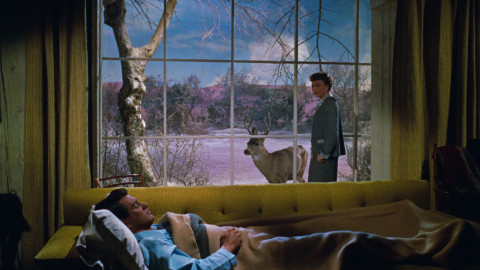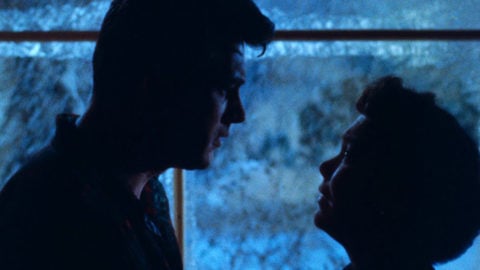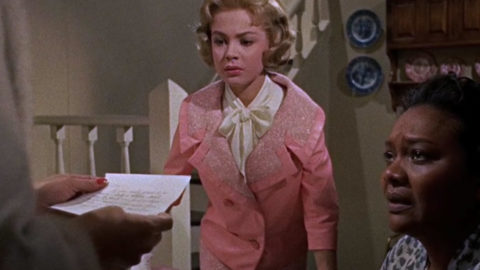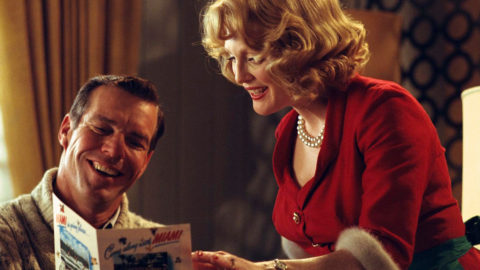Sleep, My Love (1948)
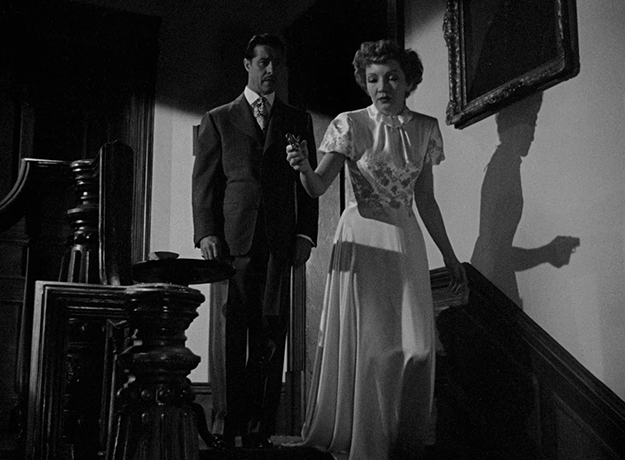
In the 1940s, Hollywood became interested in psychology and mental illness, and with that interest came an odd little flurry of films where “he’s driving me crazy” was not a joke, but a plotline. It goes like this: someone is either trying to drive a young woman crazy (Rebecca, Gaslight, My Name Is Julia Ross), or implicate her in a crime that makes her feel crazy (Whirlpool, late entries Cause for Alarm! and Dial M for Murder). The plotter is often a trusted man, a husband or lover. And love is hypnotism in a sense, so hypnotism can play a part, as can drugs. The fight is always for the woman’s reality to be recognized, by the world or by herself.
The 1948 thriller Sleep, My Love, directed by Douglas Sirk, fits the pattern. Rich, childless Alison Courtland (Claudette Colbert) has an enviable life: a lavish Sutton Place mansion, a debonair husband (Don Ameche). Except… strange things are happening to Alison. She wakes up in a sleeping car of a train without knowing how she got there, and the daffy little old lady (Queenie Smith) who barges in to help finds a tiny gun in Alison’s purse. Back home, Dick (for such is hubby’s name) is telling a cop (Raymond Burr) that he doesn’t understand his wife’s behavior. As Dick begs the cop to find his wife before she comes to any harm, he winces gently from an arm injury that he oh-so-reluctantly admits Alison had something to do with.
Swiftly we’re shown that the old lady was a plant, Alison was drugged, and Dick is trying to get rid of his wife by doping and hypnotizing her into doing a wide variety of insane things, in hopes of driving her to suicide. Helping the nefarious Dick in his engagingly implausible scheme is the old lady’s husband, Charles Vernay (George Coulouris), and providing one heck of a motive is Daphne (Hazel Brooks), the photographer’s model who wants to become the new Mrs. Courtland, but quick. Attempting to help Alison is dashing Bruce Elcott (Bob Cummings), who meets her through a chatterbox, man-hungry friend (Rita Johnson). Bruce deems Alison not only sane, but pretty cute.
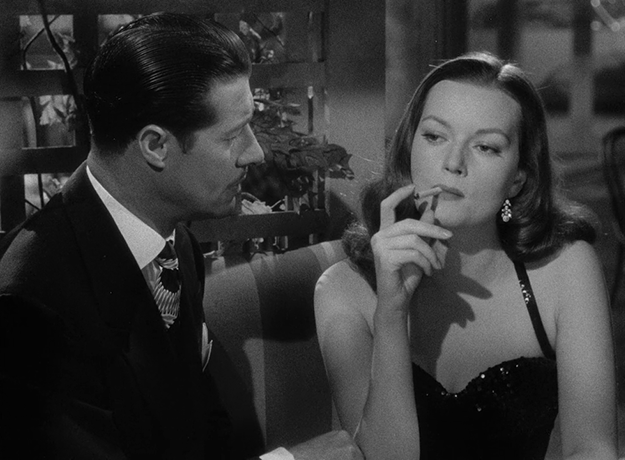
The great Universal melodramas of the 1950s are usually considered Sirk’s high point. But earlier he had an excellent run, starting with the splendid Chekhov adaptation Summer Storm in 1944, then A Scandal in Paris (46), Lured (47), then Sleep, My Love. With Joseph Valentine as cinematographer, this one looks fantastic from the first glimpse of that hurtling train.
Sirk brings many themes in the script (written by St. Clair McKelway and Leo Rosten, from Rosten’s novel) right up to the visual surface. Lights, glass, veils: Sleep, My Love presents a succession of things that both conceal, and urge Alison to see what’s going on. Alison first awakens to a sleeping-car light in her face, then looks out the window and screams in terror at the headlight of a passing train. Later, when Dick has hypnotized Alison and is luring her to a bedroom balcony in hopes she’ll hurl herself off, it’s the beam of Bruce’s flashlight from the garden below that wakes her up.
That Sutton Place house has a conservatory off the drawing room, and Sirk and Valentine use it to create a jungle-like motif, Alison frequently found emerging from or retreating to the riot of plants. She’s a literal babe in the woods. During a mid-movie encounter between Bruce and Dick, there is an impeccable shot of them both looking at Alison, Bob Cummings’s stalwart face positioned behind Ameche’s phony one. There are even some tart visual jokes. When Alison runs screaming out of her train compartment, she’s accosted by the conductor in front of a poster showing a husband-like man who’s shaving, under a tagline that says, “Me?”
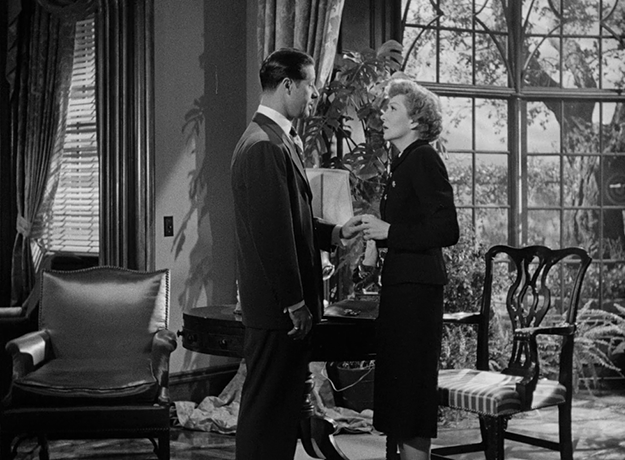
Sirk brings in his beloved mirrors, and windows, notably the frosted glass ones in a magnificent set of pocket doors in Alison’s house. Those doors are always opening to reveal something sinister, usually George Coulouris as Vernay, a shifty studio photographer. Vernay, for his part, has a pair of thick glasses that also play a big part in the proceedings. Even more prevalent are veils of sheer fabric: curtains that Alison clutches in terror, Alison’s semi-transparent nightgowns, and Daphne’s completely transparent, hubba-hubba peignoir in her first scene.
Hazel Brooks was one of those stunning-looking minor actresses that the 1940s seemed to specialize in. The postwar bad-dream machine needed sultry brunettes, and it’s a shame that Brooks wasn’t cast more often. From her lingerie-clad entrance to her greeting Coulouris with “Calm down, four-eyes,” she jolts the Gothic plot into full-blown noir. Daphne knows all the caresses and sexy poses, but she never seems turned on. She looks at Ameche like he’s an oil well that hasn’t started producing yet. I like an early, anomalous moment when Brooks interacts with Queenie Smith as Mrs. Charles Vernay, the one genuinely loopy character in this parade of fake insanity. As the old lady chatters, a look of pity rapidly crosses Brooks’s face, only to turn into impatience.
Ameche slithers around in heavy silk dressing gowns, smoking cigarettes and saying soothing things in a low-pitched, doctorly voice. If it weren’t for Brooks’s opiate presence, you could argue that he’s the one with the femme fatale role. Given the way Dick kisses Daphne, it’s easy to believe that she satisfies unhealthy needs that he couldn’t even bring up with wholesome Alison.
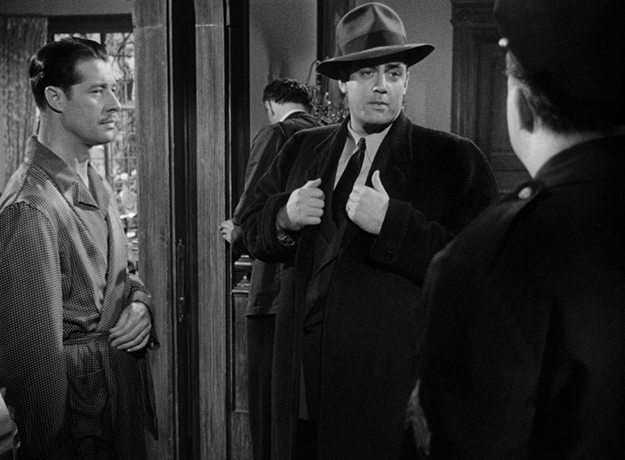
Robert Cummings, on the other hand, is the essence of good clean American masculinity, and indeed that was his specialty. This doesn’t tend to endear him to audiences (at my old blog, he was known to commenters as The Dread Bob Cummings) but Sirk, like Hitchcock, finds a vein of charm in the actor. His occasional smugness is nowhere in evidence, whether he’s having a conversation with a maid (Lillian Bronson) who has strong opinions on The New York Times, or taking Alison to his best friend Jimmie’s wedding. Jimmie, played by the excellent Keye Luke, is Chinese and so is the bride. The scene includes Chinese decor and music and a tasty alcoholic beverage that Alison partakes of a little too much; none of it is played for “exotic” laughs. For the year this movie was made, it’s a refreshing change.
And Cummings is often extremely funny; the looks that he throws at Ameche, as Dick spins his stories, range from a mild “Hm, sounds fishy” to full-out “Mister, how dumb do you think I am?” It would be wonderful to see Alison flash any expression on that spectrum at her husband, but she doesn’t.
And there, alas, is a problem with Sleep, My Love: the script asks Claudette Colbert to play against her core persona. There was something canny and commonsensical about Colbert. On screen she had a glinting intelligence that makes it hard to believe that she wouldn’t have spotted all these machinations at some point, and an early point at that. Then, too, there’s no chemistry between Colbert and Ameche, unlike in, say, Gaslight, where the sexual hold that Charles Boyer has on Ingrid Bergman is obvious. It is hard to figure out why Alison married Dick (though his reason is clear enough—the money is Alison’s, not his).
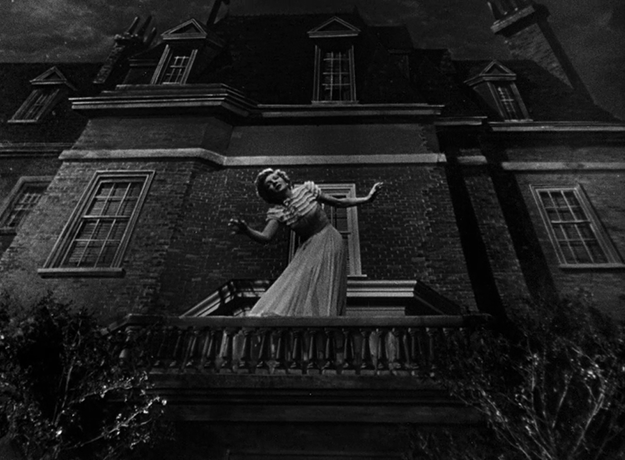
Still, this film is, as James Harvey once said in FILM COMMENT, “quite marvelous,” even with Colbert’s miscasting. And running throughout is that 1940s theme, which Sirk amplified, of a woman finding her true self under the lies she’s been accepting for years. “That doesn’t sound like my girl,” Ameche coos to Brooks as they set their final plot in motion. “Your girl is a lot of girls,” Brooks snaps. The bad dames are always wised up; it’s the good ones who have to come out from hypnosis.
Farran Smith Nehme writes about classic film on her blog, Self-Styled Siren, and recently published her first novel, Missing Reels. She is a member of the New York Film Critics Circle.



